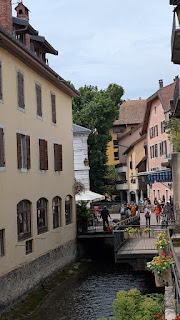The absurd situation...
I have an air ticket from France (where I live) to the US (where my family is). I tried to upload my travel documents several weeks ago, but the website didn't accept my US passport. It is valid, but expires in 3 months, so I assume that is why it wasn't taken. So, since I also have a French passport, I used that - everything looked fine, except that I had to add a US contact (ok, I have that). And there was a note stating that I might need an ESTA (waiver for visa-free travel to the US); this would be automatically checked when I check in for the flight. But of course, a US citizen doesn't get an ESTA. And I can't check in until the day before my flight. It's recommended to use their website to confirm that I will be able to check in. I do this, uploading my US passport, and it states that travel is allowed. But there's no way to connect that determination with my booking number. I remain suspicious.
Fast forward to this week. My flight is on Tuesday, so Monday morning, I try to check in. Nope, not allowed, since I don't have an ESTA. A while later, I get an email from the airline, with a link to upload more travel documents. Great! I do that (upload my US passport, and comment that it expires in 3 months), and I get to check in. I print my boarding pass, and I go to sleep, comfortable with my ability to fly the next morning.
4 AM the next morning... I have a message saying that my flight is cancelled, and they're trying to rebook me. I'll skip all that detail, and just say that it wouldn't work. I start a chat (yay!) with the airline, and I get rebooked for 2 days later. My booking number remains the same (that's important, trust me). That's not ideal, but the best option. I confirmed that I would still be able to check in without reloading my document. "Yes" is the answer (but not really).
The next day (the day before my new flight), I try to check in online. (Drum roll)
Here's where it gets absurd.
It fails (of course). I get the same type of email as before (saying I need to upload more travel documents), I follow the link, uploaded the document again, then it days I'm all set, able to check in. But I still can't! OK, I try to re-confirm via the same link, but it won't let me edit (I'm thinking I'd add a comment), and it still says I'm all set! Apparently, the site "thinks" they've cleared my booking number for check-in, and so doesn't need to again. But the check-in site needs a new ok for the new check-in (new flight, but same booking number). Sigh.
So I try the chat route as before - no answer.
I try a different app to chat, and get the auto-guy, who's no help; he just says to check in at the airport. At this point, I just want to leave feedback... Hah!
Now, I'm really just hoping my flight tomorrow isn't cancelled, that my parking reservation isn't cancelled, and that I can finally check in at the airline counter and get to California.























